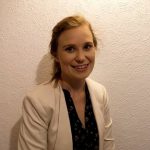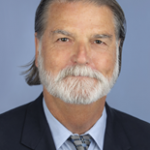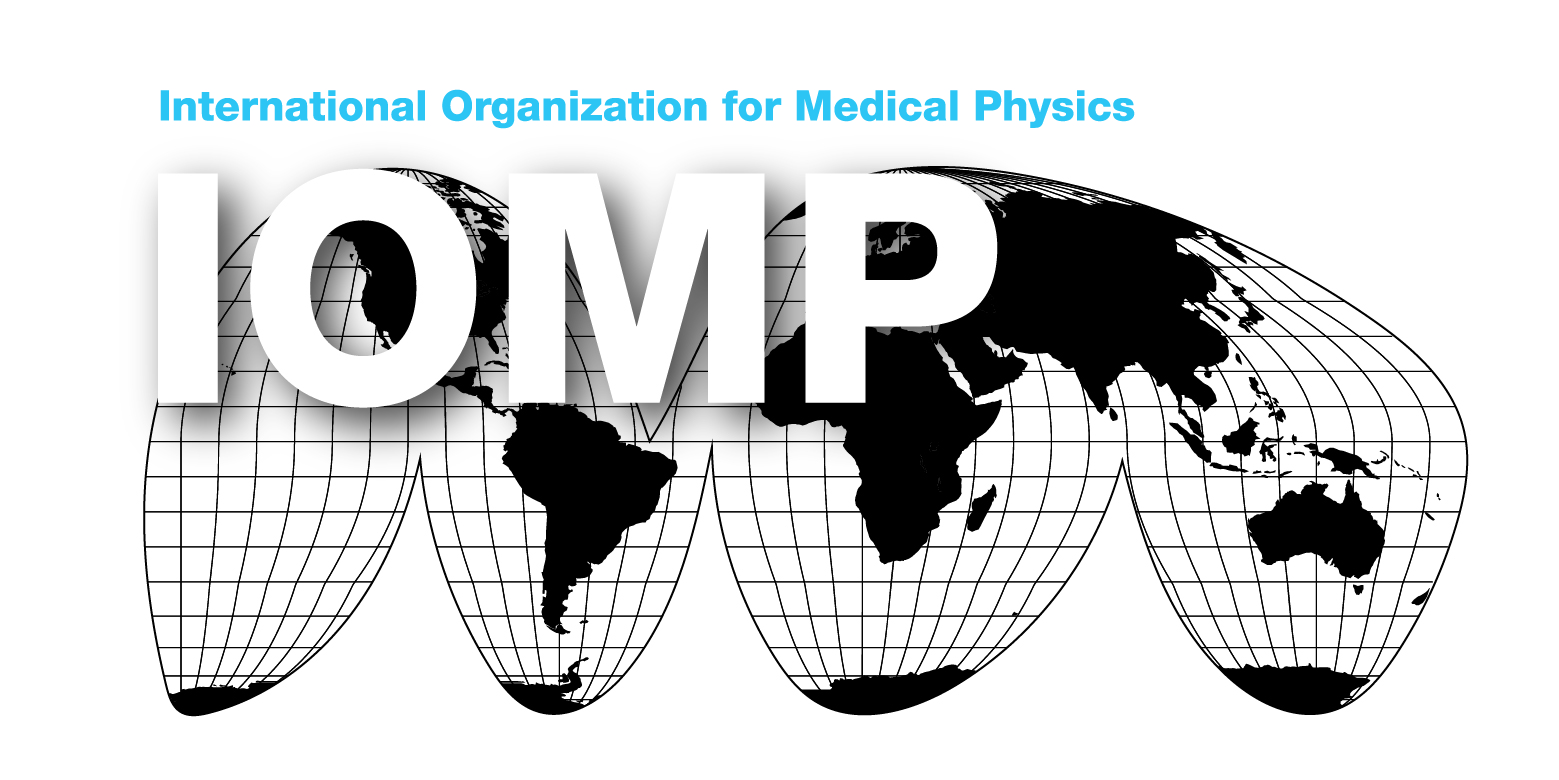IOMP SCHOOL WEBINARS 2021

List of Webinars 2021
7 Dec 2021: Modelling the invasiveness of high-grade gliomas using computational tools – from imaging to radiotherapy target definition
Tuesday, 7th December 2021 at 12 pm GMT
Organizer: Eva Bezak
Moderator: Eva Bezak
Speaker: Wille Häger

Wille Häger is a PhD student at the Department of Physics, Stockholm University, and Department of Oncology and Pathology, Karolinska Institute, in Stockholm, Sweden, under the supervision of Prof. Iuliana Toma-Dasu and Dr. Marta Lazzeroni. His PhD project is focused on models and computational tools for simulating the tumour invasion of high-grade gliomas and the potential implications for radiotherapy.
Abstract:
High-grade gliomas (HGGs) are notoriously invasive of normal tissue, and to this day prognosis remains poor. The main issue in treating HGGs appears to be determining the extent of the tumour invasion, as regions of considerable clonogenic cell populations are not detectable using conventional diagnostic imaging methods. This presentation will discuss the use of modelling to simulate the HGG growth and its invasion of brain matter, how well the simulated invasion agrees with the conventional clinical target volume (CTV) delineation, and the future prospects of model assisted CTV delineation and probabilistic treatment planning.
7 Nov 2021: IOMP webinar on IDMP 2021: Communicating the Role of Medical Physicists to the Public
Sunday, 7th November 2021 at 12 pm GMT
Organizer: Madan Rehani, President, IOMP
Moderators: Madan Rehani and Ibrahim Duhaini
Topic 1: Why Communicating the Science is Worth the Effort
Speaker: Professor Joan Leach
Director, Australian National Centre for the Public Awareness of Science, The Australian National University (ANU)
NEW BOOK: An Ethics of Science Communication
https://www.palgrave.com/gp/book/9783030321154

Professor Joan Leach, PhD is a TED talker. She is Director of the Australian National Centre for Public Awareness of Science and Chair of the Academic Board at The Australian National University. She also Chairs the National Committee for History and Philosophy of Science at the Australian Academy of Science. Her recent books include An Ethics of Science Communication (with Fabien Medvecky) and an edited collection, Science Communication: A Global Perspective which tells the stories of 39 nations and territories attempts to raise the profile of science over the last 50 years. While remaining transfixed by science, she advocates for better science communication that critically examines the social impacts of science, technology and biomedicine.
Topic 2: Communication is Understanding Waiting to Happen
Speaker: Jeanne Erdmann

Jeanne Erdmann is an award winning health and science journalist, a board member of the Association of Health Care Journalists, and co-founder of The Open Notebook. She is a freelance journalist who lives near St. Louis, Missouri. Nearly 20 years ago, she left the world of cells and microscopes for writing and reporting. Jeanne specializes in genetics, aging, end-of-life issues, and wellness. Her work has appeared in both trade and consumer publications, including Real Simple, Discover, Science News, Family Circle, Nature, Nature Medicine, Women’s Health, and The Washington Post. She is a board member of the Association of Health Care Journalists, and co-founder and editor at The Open Notebook, a craft-focused site for science, health, and environmental writers. She’s also been the recipient of numerous awards and fellowships.
Topic 3: Journalists – love them hate them but you need them. How to make friends with the press and benefit from the results
Speaker: Peter Rickwood (Executive Director, Atomic Reporters, Vienna, Austria)

He was environmental journalist on Canada’s largest daily newspaper; then Press Officer for a decade at the International Atomic Energy Agency (IAEA); media advisor to the Comprehensive Nuclear-Test-Ban Treaty Organization (CTBTO); consultant to the United Nations Scientific Committee on the Effects of Atomic Radiation (UNSCEAR); and is founder Atomic Reporters which has been organizing training workshops bringing specialists and journalists, professional and citizen together, to promote nuclear literacy and support more informed reporting.
6 Oct 2021: New Tools of Phantoms, Monte Carlo Calculations, and AI for Medical Physics Applications
Wednesday, 6th October 2021 at 12 pm GMT
Organizer: Madan Rehani
Moderator: Madan Rehani
Speaker: Prof. Xie George Xu, University of Science and Technology of China (Hefei, China)

Prof. Xie George Xu is professor and director of the Institute of Nuclear Medical Physics, University of Science and Technology of China (Hefei, China). Before relocating to China recently, he was the Edward E. Hood Endowed Chair Professor of Engineering at Rensselaer Polytechnic Institute (Troy, New York, USA). He received a Ph. D. in Nuclear Engineering (health/medical physics focus) from Texas A&M University (College Station, Texas, USA) in 1994. Since 1995, Prof. Xu has mentored nearly 100 Ph.D and M.S. students in the U.S. and China. His research has focused on “radiation dosimetry” for radiation protection, medical imaging, and radiotherapy applications, with continuous funding by governmental agencies and private sector industry. His publication list includes 2 books, 200 peer-reviewed papers/chapters, 400 abstracts, and 140 invited talks. Widely known for his work on “computational phantoms” and “advanced Monte Carlo simulations”, Prof. Xu is a fellow of American Nuclear Society (ANS), Health Physics Society (HPS), American Association of Physicists in Medicine (AAPM), and American Institute for Medical and Biological Engineering (AIMBE), as well as a council member of the National Council on Radiation Protection and Measurement (NCRP) and a past president of the Council on Ionizing Radiation Measurements and Standards (CIRMS). He has been on the editorial board of Medical Physics and Physics in Medicine & Biology for 20 years. Prof. Xu and his team have developed a number of commercial software tools including VirtualDose (a CT and IR patient dose reporting software), ARCHER (a GPU-based Monte Carlo dose computing software for treatment planning and dose QA verification), and DeepViewer (an image segmentation and registration software tool). Prof. Xu has received numerous professional recognitions including, recently, CIRMS Randal S. Caswell Award for Distinguished Achievements (2015), HPS Distinguished Scientific Achievement Award (2018), ANS Arthur Holly Compton Award in Education (2020), ANS Rockwell Lifetime Achievement Award in Radiation Protection and Shielding (2020), and AAPM Edith H. Quimby Award for Lifetime Achievement in Medical Physics (2020).
Abstract:
Estimation of organ doses in medical physics depends on computational phantoms and Monte Carlo calculations ─ two tools that have seen major advancement recently. Phantoms have evolved from the 1st-generation stylized phantoms to 2nd-generation voxel phantoms, and to 3rd-generation boundary representative (BREP) phantoms. Aided with the latest deep-learning image segmentation tools, patient-specific phantoms can be created consisting of organ outlines ready for Monte Carlo calculations. And GPU-based Monte Carlo codes can reduce dose computing time from hours to less than one minute. This presentation will cover: (1) Historical review of computational phantoms and Monte Carlo codes, (2) Development of patient-specific phantoms using an automatic multi-organ segmentation tool, DeepViewer, that is based on neural convolutional network (called U-Net) , (3) Development of rapid Monte Carlo dose calculation code, Archer, that is based on nVidia GPU co-processors and virtual-source-modeling of medical accelerators. Examples in medical imaging dose (CT, PET/CT) and radiation treatment will be discussed.
7 Sep 2021: Cardiac radioablation: An introduction, an overview, and how medical physicists could help shape its future
Tuesday, 7th September 2021 at 11 am GMT
Organizer: Eva Bezak
Moderator: Eva Bezak
Speaker: Suzy Lydiard, ACRF ImageX Institute, University of Sydney

Suzy Lydiard is a part-time PhD student at the ACRF ImageX Institute, University of Sydney, supervised by Prof. Paul Keall. Her PhD is investigating cardiac radioablation for atrial fibrillation, a new and developing non-invasive treatment alternative for the most common sustained cardiac arrhythmia. Her work is specifically evaluating the feasibility of an MRI-guided treatment on an MRI-Linac using non-invasive target tracking and MLC tracking. Suzy is also working as a clinical Radiation Oncology Medical Physicist at the Kathleen Kilgour Centre, New Zealand.
Abstract:
Cardiac radioablation has rapidly grabbed the attention of both clinicians and academics after stellar initial clinical results. Cardiac radioablation has the potential to advance and expand the clinical care available to those suffering from certain cardiac arrhythmias and is already being implemented within clinical trials globally. There are exciting and abundant opportunities for medical physicists and academics to help progress cardiac radioablation technologies and advance cardiac radioablation knowledge in order to make this treatment mainstream and accessible to those patients in need. This presentation will describe the clinical drivers for cardiac radioablation, discuss the challenges cardiac radioablation brings to radiotherapy, summarize the technology approaches currently utilized in clinical cardiac radioablation treatments, and identify potential research and development opportunities.
15 Jun 2021: CTV-PTV Margins in Stereotactic Radiosurgery: Do we need them?
Tuesday, 15th June 2021 at 11 am GMT
Organizer: Eva Bezak
Moderator: Eva Bezak
Speaker: John Shakeshaft, Site-Senior Physicist ICON Cancer Centre, Gold Coast, Queensland, Australia

John Shakeshaft currently works as the site-senior physicist at Gold Coast University Hospital within the ICON Cancer Care network. He has previously worked with both small and large radiation oncology departments across Australia and the UK (where he trained). He is the current chair of the Australasian College of Physical Scientists & Engineers in Medicine (ACPSEM) Radiation Oncology Specialist Group.
Recently he has also been the trial physicist for the Trans-Tasman Radiation Oncology Group (TROG) Cancer Research Stereotactic Radiosurgery (SRS) OUTRUN trial and chaired the technical working group developing guidelines for future TROG SRS trials.
Abstract:
Traditionally in Radiation Oncology margins are added to the clinical target volume (CTV) to allow for geometrical uncertainties in the planning and treatment. However, in stereotactic radiosurgery (SRS) some practitioners, particularly those treating with a Gamma Knife®, have not added margins to the CTV to form a planning target volume (PTV). This inconsistent approach to handling CTV-PTV between centres providing an SRS service, for example in a clinical trial, difficult.
The talk will consider:
– Geometrical uncertainties in SRS including the magnitude of the different contributing factors
– How different treatment modalities differ and the potential effect on margin requirements (for example achievable steepness of dose gradients)
– The effect of imaging for treatment position verification on modern treatment systems
– The ICRU91 approach for clinical trials
– Clinical evidence for the use of CTV-PTV margins in SRS
26 May 2021: I tested this x-ray system: Is it acceptable for clinical use?
Wednesday, 26th May 2021 at 12 pm (noon) GMT
Organizer: Madan Rehani
Moderator: Dr. Geraldine O Reilly, St. James’s Hospital, Dublin
Speaker: Stephen Balter

Stephen Balter, Ph.D. is a Professor of Clinical Radiology (physics) at Columbia University in New York City. His primary clinical responsibility is in a high volume interventional cardiology department.
Dr. Balter is ABR certified and licensed by New York State in the areas of Diagnostic Imaging, Therapeutic Radiology, and Medical Health Physics. He received his Masters in Radiological Physics from Columbia, and his Ph.D. in Experimental Physics, from Brooklyn Polytechnic Institute.
Dr. Balter is an active participant in several physical and clinical societies. He is an elected fellow in the American Association of Physicists in Medicine (AAPM), American College of Medical Physics (ACMP), American College of Radiology (ACR), Society for Cardiac Imaging and Interventions (SCAI), and the Society for Interventional Radiology (SIR). He is a member of Council of the National Council on Radiation Protection and Measurements (NCRP), and currently serves on three International Electrotechnical Commission (IEC) working groups.
Dr. Belter’s interests have focused on brachytherapy, interventional radiology, and related health-physics topics. He has published over 200 papers, chapters, and books in these and related areas. Among these, he was the chair for NCRP Report 168 on fluoroscopic guided interventions. He has served as an invited lecturer and visiting professor in many USA and worldwide venues.
Abstract:
Physicists make quantitative measurements to determine therapeutic and diagnostic equipment safety and performance. Measurement uncertainty can influence acceptability decisions. Inappropriate equipment acceptance might result in hazardous operation. Improper rejection could be hazardous to patients if alternative equipment is not available in a timely manner.
This presentation reviews basic concepts and nomenclature for measuring instrument calibration and measurement uncertainty applicable to all areas of medical physics. A brief outline of the differences between manufacturers’ and medical physicists’ processes will be presented using fluoroscopic beam measurements as an example. It concludes with some clinical implications of acceptability.
10 May 2021: Publishing in medical physics
Monday, 10th May 2021 at 1 pm GMT
Organizer: Madan Rehani
Moderator: Paolo Russo, Chair, Publication Committee, IOMP, Past Editor-in-Chief, Eur J Medical Physics
Speakers: Katia Parodi and John Boone
Topic 1: Keeping the Pace with a Rapidly Evolving Field of Medical Physics
Speaker: Prof. Dr. Katia Parodi
Chair of Experimental Physics – Medical Physics, Faculty of Physics at LMU Munich
Editor-in-Chief, Physics in Medicine & Biology

Katia Parodi received her Ph.D. in Physics from the University of Dresden, Germany, in 2004. She then worked as postdoctoral fellow at Massachusetts General Hospital and Harvard Medical School in Boston, USA. In 2006 she returned to Germany as tenured scientist and group leader at the Heidelberg Ion Therapy Center, obtaining in 2009 her Habilitation from the Heidelberg University. Since 2012 she is full professor and Chair of Medical Physics at the Physics Faculty of the Ludwig-Maximilians-Universität München (LMU) in Munich, where she initiated a dedicated curriculum for Medical Physics within the Physics Master of Science study. Her main research interests are in high precision image-guided radiotherapy with a special focus on ion beams, from advanced computational modeling to experimental developments of novel methods for imaging and in-vivo ion range monitoring for pre-clinical and clinical applications. Katia Parodi has been invited speaker and committee member at many conferences, contributed to over 200 publications in peer reviewed journals, 12 book chapters and a couple of patents. For her work, she received several national and international recognitions, including the Behnken Berger Award in 2006, the IEEE Bruce Hasegawa Young Investigator Medical Imaging Science Award in 2009, the AAPM John S. Laughlin Young Scientist in 2015 and the awarding of an ERC Consolidator grant in 2016. In 2017-2018 she served as president of the German Society for Medical Physics, and is since 2021 the Editor-in-Chief of the journal Physics in Medicine and Biology.
Topic 2: The Fundamentals of a Great Paper
Speaker: John M. Boone, Ph.D.
Professor of Radiology and Biomedical Engineering
Editor-in-Chief, Medical Physics

John M. Boone, Ph.D. received his undergraduate degree in Biophysics at UC Berkeley and his MS and Ph.D. in Medical Physics at UC Irvine. After faculty positions at University of Missouri, Columbia and Thomas Jefferson University in Philadelphia, he is now Professor of Radiology and Biomedical Engineering at the University of California Davis, in Sacramento California. His research interests include the development of cone beam CT systems for dedicated breast imaging, and the use of Monte Carlo methods for radiation dose assessment in diagnostic radiology especially in breast imaging and CT. His lab has also developed accurate x-ray spectral models for diagnostic radiological imaging, non-destructive testing, and ortho-voltage therapy applications. His interests also extend to whole body CT, including the development and implementation of new methods for image quality evaluation (e.g. 3D MTF and 3D NPS) and for radiation dosimetry (Size Specific Dose Estimation – SSDE).
30 Apr 2021: IOMP webinars on IMPW 2021: The management of unintended and accidental exposures
Moderator: Eva Bezak
Speaker: Colin Martin

Dr Colin Martin worked as a hospital-based Medical Physicist in Radiation Protection in Glasgow and Aberdeen, Scotland for over 30 years. He has now retired from the NHS but is an honorary senior lecturer for the University of Glasgow. Colin is Vice-Chair of ICRP Committee 3 (Protection in Medicine), chairs two ICRP Task groups and is a member of several others. He is a member of various UK and EU working parties, COMARE, which advises the UK government on medical uses of radiation, and he has chaired two IAEA Technical Meetings on avoidance and prevention of radiation incidents in medicine. His research interests include radiation protection, diagnostic radiology, radiation dosimetry, and non-ionising physics. He has co-authored/edited several textbooks on radiation protection, written over 300 articles including 150 papers in peer reviewed scientific journals. Colin is a member of Editorial Boards for the Journal of Radiological Protection and Radiation Protection Dosimetry.
More details: https://www.iomp.org/iomp-school-on-impw-2021-day-5
29 Apr 2021: IOMP webinars on IMPW 2021: Does contact shielding improve patient safety?
Moderator: Chai Hong Yeong
Speaker: Paddy Gilligan

Paddy Gilligan works as chief physicist in the Mater Private Hospital in Dublin Ireland. He has
over thirty years’ experience in diagnostic imaging, He has served on state boards for regulatory radiation protection agencies. He became associate professor in University College Dublin in 2017. He was the chair of the European congress of radiology physics programme in 2019 He was a member the radiation safety committee of the European Society of Radiology, and the Eurosafe imaging steering committee. Prior to becoming President of EFOMP he chaired the successful bid for ECMP 2022 for Dublin. He is a trustee of the Robert Boyle Foundation. He is currently chair of the Gonad and Patient Shielding (GAPS) group of experts who are in the process of producing a consensus document on patient shielding from the major European professional bodies involved in radiology.
More details: https://www.iomp.org/iomp-school-on-impw-2021-day-4
28 Apr 2021: IOMP webinars on IMPW 2021: Patient radiation protection: How IAEA and WHO are contributing?
Wednesday, 28th April
Speakers: Ola Holmberg and Maria Perez

Dr. Ola Holmberg is the Head of the Radiation Protection of Patients Unit at the International Atomic Energy Agency (IAEA), Vienna, Austria since the last 12 years – an organization within the United Nations family. He is a medical physicist who has previously worked in Sweden, Ireland, the Netherlands and Denmark.

Dr María del Rosario Pérez is a physician who worked in the field of radiation protection for more than 3 decades. She received her M.D. in 1980 from the School of Medicine of the Buenos Aires University (Argentina). She completed her professional education on Diagnostic Imaging and Radiotherapy and worked as radiation oncologist at a public hospital until 1990. After obtaining a post-graduate diploma on Radiation Protection and Nuclear Safety she worked at the National Atomic Energy Commission (CNEA) and the Nuclear Regulatory Authority (ARN). Since 2007 she works at the WHO Radiation and Health Unit in Geneva (Switzerland). She represents WHO at the United Nations Scientific Committee on the Effects of Atomic Radiation (UNSCEAR), the IAEA Radiation Safety Standards Committee (RASSC), the International Commission on Radiological Protection (ICRP), the EC Art 31 Group of Experts and the Inter-Agency Committee on Radiation Safety (IACRS), which she is currently chairing.
27 Apr 2021: IOMP webinars on IMPW 2021: Artificial Intelligence and medical physics: The initial experience of the SINFONIA Horizon project
Tuesday, 27th April 2021, 12.00 GMT
Moderator: Mika Kortesniemi
Speakers: John Damilakis and Habib Zaidi
Further information: https://www.sinfonia-appraisal.eu/

John Damilakis is professor & chairman at the Department of Medical Physics, School of Medicine, University of Crete & director of the Department of Medical Physics of the University Hospital of Heraklion, Crete, Greece. He is Vice President & President‐elect of IOMP, Immediate Past President of EURAMED, Past President of EFOMP and Past President of the ‘Hellenic Association of Medical Physics’. Prof. Damilakis is a member of 2 ICRP Task Groups & member of the steering committee of the ‘EuroSafe Imaging’ of the European Society of Radiology. As a Visiting Professor he has given lectures on dosimetry and radiation protection in Boston University, USA. His publications have been focused on medical radiation protection and dosimetry. He is editor of 2 books published by the IOP Publishing and Springer‐Verlag and co‐author of 2 chapters in books published by Springer and Academic Press. Number of publications in PubMed: 220, number of citations 7220, h‐index 45 (Google Scholar, February 2021).

Professor Habib Zaidi is Chief physicist and head of the PET Instrumentation & Neuroimaging Laboratory at Geneva University Hospital and faculty member at the medical school of Geneva University. He is also a Professor at the University of Groningen (Netherlands) and the University of Southern Denmark. His research is supported by the Swiss National Foundation, private foundations and industry (Total 8.3M US$) and centres on hybrid imaging instrumentation (PET/CT and PET/MRI), computational modelling and radiation dosimetry and deep learning. He was guest editor for 11 special issues of peer-reviewed journals and serves on the editorial board of leading journals in medical physics and medical imaging. He has been elevated to the grade of fellow of the IEEE, AIMBE and the AAPM. His academic accomplishments in the area of quantitative PET imaging have been well recognized by his peers since he is a recipient of many awards and distinctions among which the prestigious (100’000$) 2010 kuwait Prize of Applied sciences (known as the Middle Eastern Nobel Prize). Prof. Zaidi has been an invited speaker of over 160 keynote lectures and talks at an International level, has authored over 320 peer-reviewed articles in prominent journals and is the editor of four textbooks.
26 Apr 2021: IOMP webinars on IMPW 2021
Monday, 26th April 2021; 12.00 GMT
Organizers: John Damilakis and Madan Rehani
Moderator: John Damilakis
Speakers: Madan Rehani and Eric Silver
Further information: https://pubmed.ncbi.nlm.nih.gov/33368354/

Dr. Madan M. Rehani is Director, Global Outreach for Radiation Protection at the Massachusetts General Hospital, Boston, USA
He is President, International Organization for Medical Physics (2018-2021). He was earlier Radiation Safety Specialist at the International Atomic Energy Agency for 11 years and prior to that Professor and Head of Medical Physics at the All India Institute of Medical Sciences, New Delhi, India. Dr. Rehani is a Member, International Commission on Radiological Protection (ICRP). He is author of 8 Annals of ICRP, 4 of which as Chair of the Task Group. He is Senior editor BJR, Assoc Editor, Eur J Medical Physics. He has more than 165 publications, has written 40 chapters in Books and has edited 5 books. He has published papers in high impact factor journals e.g. JAMA Intern Med, Br Med J, Eur Heart J, Cardiovascular Imaging, Am J Gastroenterol, Circulation J, The Lancet.

Eric Silver has dedicated his career to experimental high energy astrophysics. He spent 21 years as a Senior Astrophysicist at the Harvard-Smithsonian Center for Astrophysics (CfA) where he directed an interdisciplinary program of X-ray spectroscopy, polarimetry and low temperature physics for 1) the study of cosmic x-ray and gamma ray sources such as black holes, supernova remnants and clusters of galaxies; 2) fundamental physics investigations of highly charged ions produced in heavy ion accelerators and laboratory plasmas; and 3) industrial and medical applications where high resolution x-ray spectroscopic imaging is important to materials and chemical analysis. The latter included studies of silicon wafers for the semiconductor industry, interstellar dust and cometary particles returned to Earth from NASA probes, examining artifacts and fine art for conservation science, and even mapping anti-cancer drugs at the cellular level. He received his B.S. degree in Physics from M.I.T. and Ph.D. in Astrophysics from Columbia University, has served on many NASA, NIH, DoE and NSF review panels, authored/co-authored 130+ publications on spectroscopy and x-ray imaging and is the co-editor of a book on spectroscopy. Eric was a recipient of a NIH Challenge Grant and the George E. Burch Fellowship for new medical applications and has 16 patents to his credit.
16 Mar 2021: Joint IAEA–IOMP webinar: Patients Undergoing Recurrent CT Imaging: Managing Cumulative Doses
16 March 2021, 2 pm CET
Moderator: Jenia Vassileva (IAEA)
Speaker: Madan Rehani (IOMP)
9 Apr 2021: IOMP webinar jointly with WHO, IRPA and IAEA on Radiation Safety Culture
Tuesday, 9th Feb 2021 at 12 noon GMT
Organizer and Moderator: Prof. Madan Rehani, IOMP
Speakers in alphabetical orders of organization (IAEA, IOMP, IRPA, WHO):
Dr. Debbie Gilley, IAEA
Dr. Madan Rehani, IOMP
Dr. Bernard le Guen, IRPA
Dr. Maria Perez, WHO
Abstract:
We have so many tools and means to practice radiation safety. The transition from radiation safety to radiation safety culture occurs when we are able to make everyone involved practice safety. Thus, radiation safety culture has much to do with establishing culture. Experts from 4 major international organizations shall deliberate on this important topic and will cover both diagnostic and therapeutic activities in which staff in medical institutions are involved with.
Dr. Debbie Gilley is a Radiation Protection Specialist with the International Atomic Energy Agency in the Division of Radiation, Transport and Waste Safety Radiation Protection of Patients Unit. Her activities within the Agency included the development and implementation of the Safety in Radiation Oncology medical event reporting system (SAFRON), assisting in IAEA patient protection and safety campaigns and assisting countries in supporting radiation protections of patient activities. She is a contributing author of several IAEA publications on patient safety and a chapter in the recently published book entitled “Modern Technology of Radiation Oncology” and “Radiotherapy in Cancer Care: Facing the Global Challenge”.
Past professional responsibilities include Government Relations Specialist with the American Association of Physicists in Medicine (AAPM) Twenty-four years of service to the Florida Bureau of Radiation Control, United States as Manager of the Training and Quality Assurance Program, Manager of the Radioactive Materials Program, Academically she has an undergraduate and master’s degree from Florida State University and attended Oak Ridge Associated Universities.

Dr. Madan M. Rehani is Director, Global Outreach for Radiation Protection at the Massachusetts General Hospital, Boston, USA. He is President, International Organization for Medical Physics (2018-2021). He was earlier Radiation Safety Specialist at the International Atomic Energy Agency for 11 years and prior to that Professor and Head of Medical Physics at the All India Institute of Medical Sciences, New Delhi, India. Dr. Rehani is a Member, International Commission on Radiological Protection (ICRP). He is author of 8 Annals of ICRP, 4 of which as Chair of the Task Group. He is Senior editor BJR, Assoc Editor Medical Physics. He has more than 155 publications, has written 39 chapters in Books and has edited 5 books. He has published papers in high impact factor journals e.g. JAMA Intern Med, Br Med J, Eur Heart J, Cardiovascular Imaging, Am J Gastroenterol, Circulation J, The Lancet.

Dr Bernard le Guen is the IRPA President for 2021-2024 and was the IRPA Executive officer since 2012. Bernard le Guen is a medical Doctor (MD) and specialising in occupational medicine, in medical biology and in Radiation Protection. He is a senior fellow expert for Radiation Protection and Health for the EDF group. He is Chairman of the CEPN Governing Board (Nuclear Health Physics Research Centre) which assesses measures taken to protect the public from hazards associated with ionising radiation (technical, economic, social and health-related aspects). He received 2 awards from the American HPS in recognition of his contribution to radiation protection, the R.S. Landauer Award in 2011 and the William Morgan Award in 2019 . He launched an IRPA international initiative on Radiation Protection Culture in 2008, published an IRPA guidance on this subject in 2014 and is one of the co –author of the new common guidance on Safety Culture in Health Care.

Dr María del Rosario Pérez is a physician who worked in the field of radiation protection for more than 3 decades. She received her M.D. in 1980 from the School of Medicine of the Buenos Aires University (Argentina). She completed her professional education on Diagnostic Imaging and Radiotherapy and worked as radiation oncologist at a public hospital until 1990. After obtaining a post-graduate diploma on Radiation Protection and Nuclear Safety she worked at the National Atomic Energy Commission (CNEA) and the Nuclear Regulatory Authority (ARN). Since 2007 she works at the WHO Radiation and Health Unit in Geneva (Switzerland). She represents WHO at the United Nations Scientific Committee on the Effects of Atomic Radiation (UNSCEAR), the IAEA Radiation Safety Standards Committee (RASSC), the International Commission on Radiological Protection (ICRP), the EC Art 31 Group of Experts and the Inter-Agency Committee on Radiation Safety (IACRS), which she is currently chairing.


